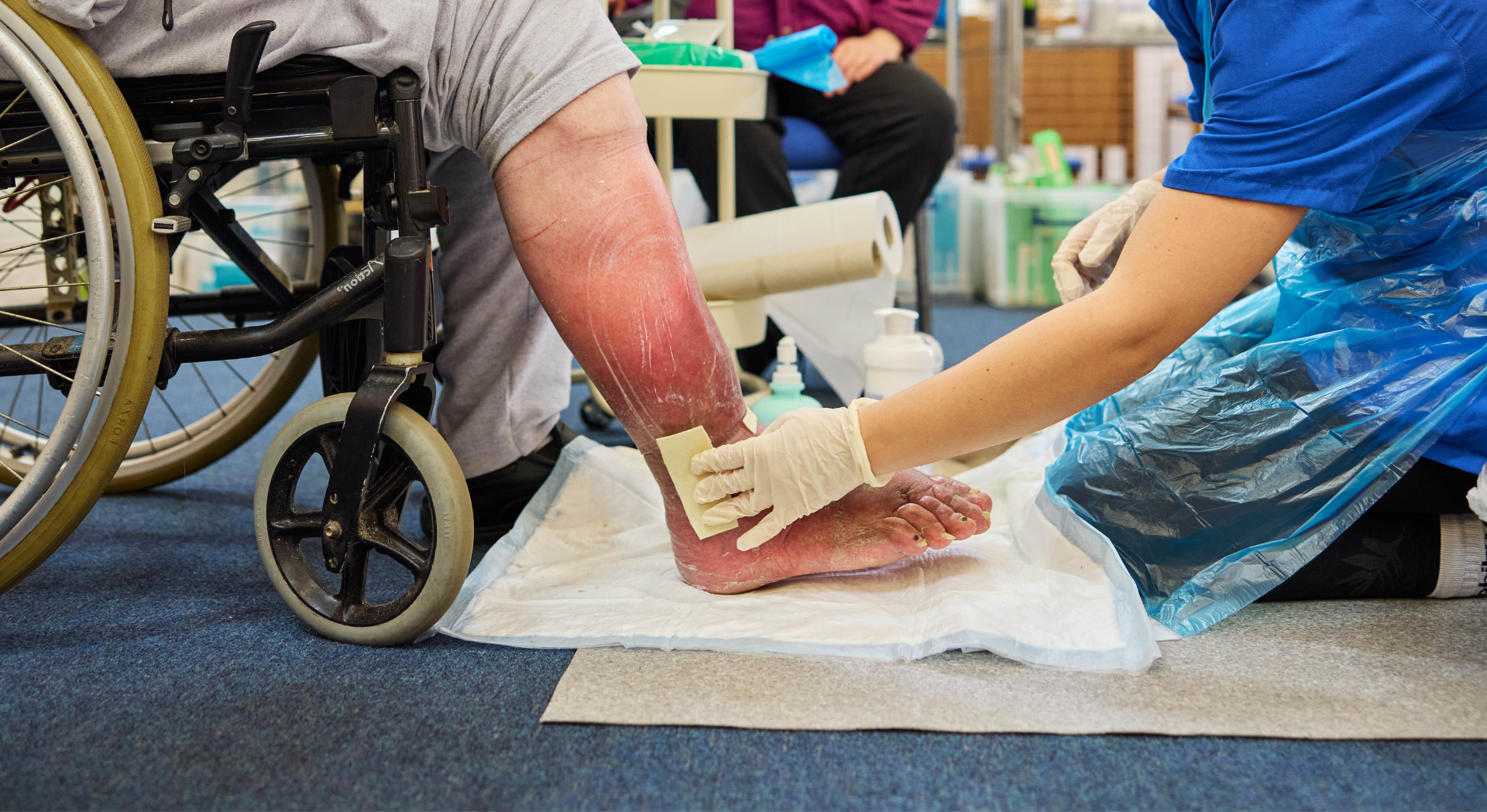Clinical Challenge
A 39-year old male presented at the clinic with a second-degree burn resulting from contact with a wood-burning stove. The patient had no ongoing co-morbidities or medication/therapy that could have affected the wound.
Patient and Wound History
- The wound, located on the left side of the body, ranged from under the left armpit down to the buttock and had an area of 247.5cm2 . The burn wound had been present for six days
- The wound bed was made up of 5% slough/fibrinous tissue, 85%
granulation tissue and 10% epithelialised tissue - Several clinical signs of wound infection were recorded: swelling, increased pain, oedema and increased exudation
- Moderate levels of clear/serous exudate were observed
- The wound edge and the peri-wound skin were healthy and intact
- Pain experienced during the dressing change procedure, as measured on a visual analogue scale [VAS] ranging from 0 [no pain] to 10 [maximum pain ever], was evaluated. At the baseline assessment, the patient recorded a VAS of 6 during the removal of the previously used dressing
- The wound had previously been treated with Mepilex® Transfer Ag and
Mesorb®. Mefix® was used for fixation

Intervention and Treatment Regime
- Throughout the study, Exufiber was used as the primary wound dressing. An oat beta glucan cream was applied to the burn after cleansing and a polyurethane film was used as the secondary dressing
- Treatment with Exufiber was monitored over an 8-day period, during
which the patient attended two follow-up visits - At the follow-up visits, the dressing was changed. Dressing changes were performed according to local clinical practice or when the dressing became saturated. Dressings were always changed at each of the clinic visits; in between the scheduled visits, dressings were changed at the discretion of the patient/clinician
- At least three Exufiber dressings [20x30cm] were used at each dressing
change and during the study period two dressing changes were performed; the median dressing change frequency was four days
Follow-up assessments
- Over the treatment period, the condition of the wound improved and at the final follow-up visit the wound bed was composed of 98% epithelial tissue and 2% granulation tissue
- After four days of treatment, there were no clinical signs of infection.
- Throughout the study period the wound edge and the peri-wound skin were healthy and intact
- At all follow-up visits wound exudation was low and clear/serous in nature
- The patient reported a VAS of 2-3 at the initial dressing change assessment, with a VAS of Oat the final study visit
Wound Progression

Clinical outcome
- After eight days of treatment with Exufiber®, the wound had significantly improved. Further treatment was continued after the study period ended, but only with the oat beta glucan cream
- At the baseline visit, the nurses rated Exufiber as 'Good' for its ease of application and flexibility of handling. At the first follow-up assessment, the nurses rated Exufiber as 'Excellent' for its ease of application and flexibility of handling, its conformability to the wound bed and its contours, and at the final assessment they also rated the ease of removal of Exufiber without pain or tissue damage, its drainage handling capacity [exudate absorption/retention capacity], and its ability to 'clean· the wound bed [i.e. remove blood, pus, slough etc.] as 'Excellent'
- The patient reported that, prior to the study, previous wound dressings failed to conform well to the wound and ·came off easily, sleep was disturbed, and movement was painful. The patient reported Exufiber dressings were comfortable to wear
Acknowledgement: Photographs and case notes kindly supplied by Arja Korhonen, Registered Wound Nurse, Kainuun keskussairaala, Sotkamontie 13, 87300 Kajaani, Finland

Learn more about Exufiber®
Exufiber® is designed to manage exudate efficiently and stay intact for clean, one-piece removal.




